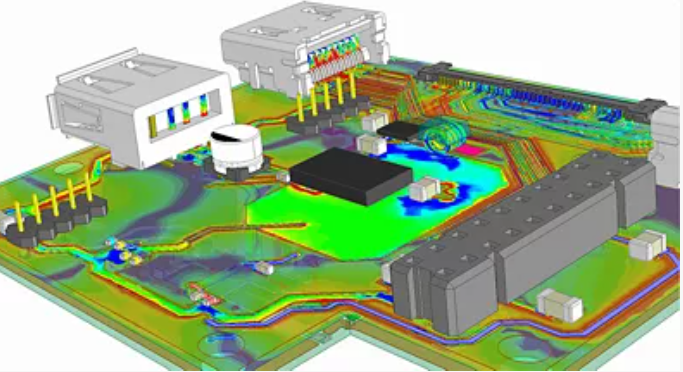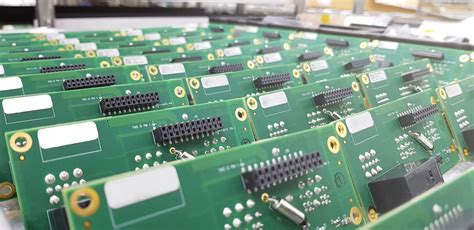The Evolution and Importance of PCB Circuit Simulators in Modern Electronics Design
Introduction to PCB Circuit Simulators
Printed Circuit Board (PCB) circuit simulators have become indispensable tools in the electronics design process, revolutionizing how engineers develop and test electronic circuits before physical prototyping. These sophisticated software applications allow designers to create virtual representations of electronic circuits, simulate their behavior under various conditions, and identify potential issues before committing to expensive manufacturing processes.
PCB circuit simulators bridge the gap between theoretical circuit design and practical implementation, offering a risk-free environment for experimentation and optimization. By providing accurate predictions of circuit performance, these tools have dramatically reduced development cycles, lowered costs, and improved the reliability of electronic products across industries ranging from consumer electronics to aerospace applications.
Historical Development of PCB Simulation Technology
The evolution of PCB circuit simulators parallels the advancement of computer technology and electronic design automation (EDA) tools. Early simulation capabilities emerged in the 1960s with the development of SPICE (Simulation Program with Integrated Circuit Emphasis) at the University of California, Berkeley. This groundbreaking software laid the foundation for modern circuit simulation by introducing algorithms that could solve complex nonlinear circuit equations.
Throughout the 1980s and 1990s, as personal computers became more powerful, SPICE-based simulation tools became more accessible to engineers. The integration of schematic capture with simulation capabilities created a more intuitive workflow, while the addition of PCB layout tools formed complete electronic design suites. Modern PCB circuit simulators now incorporate mixed-signal simulation (combining analog and digital components), high-frequency RF analysis, and even thermal and mechanical stress modeling.

Core Functionality of Modern PCB Circuit Simulators
Contemporary PCB circuit simulators offer a comprehensive suite of features that address the complete design cycle:
1. Schematic Capture and Visualization
All PCB simulators begin with schematic entry tools that allow engineers to construct circuit diagrams using component libraries. These interfaces typically include thousands of pre-modeled components with accurate electrical characteristics, along with tools for creating custom components when needed.
2. SPICE-based Circuit Simulation
At the heart of most PCB simulators lies a SPICE engine or its derivative, capable of performing:
- DC analysis (operating point calculation)
- Transient analysis (time-domain response)
- AC analysis (frequency response)
- Parameter sweeps (component value variations)
- Monte Carlo analysis (statistical variations)
- Noise analysis
3. Mixed-Signal Simulation
Modern electronic designs often combine analog and digital components. Advanced simulators can handle both domains simultaneously, using appropriate modeling techniques for each and accurately simulating their interactions.
4. High-Speed Digital Simulation
With the increasing speed of digital circuits, PCB simulators now include specialized tools for signal integrity analysis, including:
- Transmission line effects
- Reflection and ringing
- Crosstalk between traces
- Eye diagram analysis for high-speed serial links
5. Power Integrity Analysis
Power distribution networks in modern PCBs require careful design to ensure stable voltage levels throughout the board. Simulation tools can analyze:
- DC voltage drop
- AC impedance of power planes
- Decoupling capacitor performance
- Simultaneous switching noise
6. Thermal Analysis
Many simulators now incorporate thermal modeling to predict component temperatures and identify potential overheating issues before board fabrication.

Benefits of Using PCB Circuit Simulators
The adoption of PCB circuit simulation tools offers numerous advantages throughout the product development cycle:
1. Reduced Development Costs
Simulation allows engineers to identify and correct design flaws early in the process, avoiding costly respins of physical prototypes. Studies have shown that errors caught during simulation are orders of magnitude less expensive to fix than those discovered after manufacturing.
2. Accelerated Time-to-Market
By enabling virtual prototyping and testing, simulation significantly shortens design cycles. Engineers can explore multiple design alternatives quickly without waiting for physical boards to be fabricated and assembled.
3. Improved Product Reliability
Comprehensive simulation helps uncover subtle issues that might not be apparent in initial testing but could cause field failures. This includes marginal stability, thermal stress, and signal integrity problems that might only manifest under specific operating conditions.
4. Enhanced Design Optimization
Simulation tools allow designers to easily vary parameters and immediately see the effects on circuit performance, facilitating optimization for factors like power consumption, signal quality, or component cost.
5. Educational Value
For students and novice engineers, circuit simulators serve as excellent learning tools, providing immediate feedback on circuit behavior and helping develop intuition about electronic principles.

Challenges and Limitations of PCB Simulation
Despite their tremendous value, PCB circuit simulators are not without limitations:
1. Model Accuracy
Simulation results are only as good as the component models used. While basic components like resistors and capacitors have well-understood models, complex ICs often require simplified representations that may not capture all real-world behaviors.
2. Computational Complexity
Large circuits with many components or high-frequency signals can require significant computational resources and time to simulate, sometimes forcing engineers to make trade-offs between simulation detail and practicality.
3. Convergence Issues
Nonlinear circuit simulations can sometimes fail to converge to a solution, particularly with circuits containing ideal components or extreme parameter values.
4. Interpretation of Results
Properly understanding simulation outputs requires substantial expertise. Misinterpretation can lead to incorrect conclusions about circuit behavior.
Emerging Trends in PCB Simulation Technology
The field of PCB circuit simulation continues to evolve with several notable trends:
1. Cloud-based Simulation
Moving simulation workloads to cloud platforms offers several advantages:
- Access to virtually unlimited computational resources
- Collaboration among geographically dispersed teams
- Reduced need for high-end local hardware
2. Integration with Machine Learning
AI and machine learning techniques are being applied to:
- Automate model parameter extraction
- Predict potential design issues
- Suggest component substitutions
- Optimize circuit performance
3. Multi-physics Simulation
Increasing integration of:
- Electromagnetic field simulation
- Thermal analysis
- Mechanical stress modeling
- Fluid dynamics (for cooling systems)
4. Virtual Reality Interfaces
Emerging VR technologies allow engineers to visualize and interact with simulated circuits in three-dimensional space, potentially improving intuition about complex system behaviors.
Popular PCB Circuit Simulators in the Industry
Several PCB circuit simulation tools have become industry standards:
1. LTspice
Developed by Analog Devices (originally Linear Technology), this free SPICE simulator is widely used for analog circuit design with an emphasis on power electronics.
2. OrCAD PSpice
A commercial SPICE variant integrated with Cadence’s OrCAD PCB design suite, offering advanced analysis capabilities and extensive component libraries.
3. NI Multisim
Originally developed as Electronics Workbench, Multisim is popular in academic settings and offers intuitive interfaces combined with robust simulation capabilities.
4. Altium Designer with SIM
Altium’s integrated simulation tools combine schematic capture, SPICE simulation, and PCB layout in a unified environment.
5. KiCad with ngspice
The open-source KiCad project incorporates the ngspice simulation engine, providing free access to capable simulation tools.
Best Practices for Effective PCB Circuit Simulation
To maximize the benefits of PCB simulation, engineers should follow these guidelines:
- Start Simple: Begin with basic simulations to verify fundamental circuit operation before adding complexity.
- Validate Models: Ensure component models accurately represent real-world behavior, especially for critical components.
- Use Parameter Sweeps: Explore how circuit performance varies with component tolerances and operating conditions.
- Verify with Multiple Analyses: Cross-check results using different simulation types (DC, AC, transient).
- Compare with Hand Calculations: For critical circuits, perform basic calculations to verify simulation results are reasonable.
- Document Assumptions: Clearly note any simplifications or idealizations made in the simulation setup.
- Gradually Increase Complexity: Add parasitic elements and non-ideal behaviors as the design matures.
The Future of PCB Circuit Simulation
Looking ahead, PCB circuit simulators will likely continue their trajectory toward:
- Tighter integration with PCB layout and manufacturing processes
- Increased automation of routine design tasks and verification
- More comprehensive virtual prototyping encompassing electrical, thermal, and mechanical domains
- Enhanced collaboration features for distributed design teams
- Greater accessibility through simplified interfaces and educational tools
As electronic systems grow more complex with the proliferation of IoT devices, 5G technologies, and advanced computing platforms, the role of PCB circuit simulators will only become more critical in ensuring successful, cost-effective, and reliable electronic product development.
Conclusion
PCB circuit simulators have transformed electronic design from an artisanal craft to a precise engineering discipline. By enabling thorough virtual testing and optimization, these tools have become essential for developing competitive electronic products in today’s fast-paced market. While challenges remain in model accuracy and computational complexity, ongoing advancements in simulation technology continue to push the boundaries of what can be designed and verified before physical prototyping.
As the electronics industry evolves with new materials, higher frequencies, and more integrated systems, PCB circuit simulators will adapt to meet these challenges, remaining at the forefront of electronic design innovation. For engineers and designers, mastering these powerful tools is no longer optional but a fundamental requirement for success in the field of electronics development.







